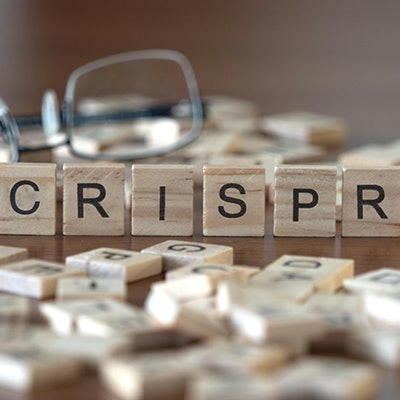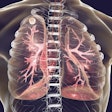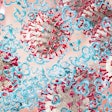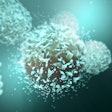
A novel engineered CRISPR technology can locate RNA from SARS-CoV-2 in about half an hour, detecting the COVID-19 virus more rapidly and in much lower concentrations than previous tests, according to research published Thursday in Nature Chemical Biology.
The device has the potential for use as a diagnostic test at the point of care (POC), according to its developers.
The key feature of the technology involved engineering the CRISPR-associated protein 13 (Cas13) to optimize its characteristic collateral activity to recognize nearby RNA of SARS-CoV-2 in attomolar (10-18) concentrations, wrote the researchers from Rice University and the University of Connecticut.
Cas13, like the better-known Cas9, is part of a system by which bacteria naturally defend themselves against invading phages. CRISPR-Cas9 has been used by scientists to edit living DNA genomes and has potential to treat and cure diseases. The Cas proteins' unique collateral cleavage ability enables them to cleave surrounding nucleic acid once they bind to a target site.
In the Nature Chemical Biology study, the system was modified from a naturally occurring genome editing system used by bacteria as an immune defense.
The researchers utilized structure-guided protein engineering to improve Cas13's collateral activity. They generated Leptotrichia wadei-based Cas13 variants with enhanced collateral activity by fusing an RNA-binding domain (RBD) to a Cas13a protein that facilitated the capture of adjacent target and reporter RNAs, such as from SARS-CoV-2.
Cas13 was enhanced with guide RNA to find and snip target RNA sequences, while also finding RNA from nearby viruses like SARS-CoV-2, according to the scientists.
The key was a hidden, flexible hairpin loop near Cas13's active catalytic site that determines Cas13's activity. The researchers fused seven different RBDs to the loop. Two of the complexes were superior. When they found their targets, the proteins fluoresced, revealing the virus's presence.
The new platform was successful compared to PCR techniques, detecting 10 of 11 positives, without any false positives for the virus in tests on clinical samples from nasal swabs. The researchers showed that their technique found indications of SARS-CoV-2 in attomolar (10-18) concentrations, without the need for the time-consuming RNA extraction and amplification required in PCR testing.
To improve detection, the researchers coupled the assay to an electrochemical sensor. It had been coupled to a fluorescence plate reader, but these readers generally are not available in low-resource settings. By comparison, the electrochemical sensor offered greater sensitivity and could allow the system to be used as a POC diagnostic test.
"The stability and robustness of engineered Cas13 variants make them more suitable for point-of-care diagnostics in low-resource setting areas when expensive PCR machines are not available," Xue Sherry Gao, a chemical and biomolecular engineer at Rice, said in a statement.
The scientists would like to transition the technology to paper strips like those used in home COVID-19 antibody tests, but with much higher sensitivity and accuracy, according to Gao.
The investigators are trying to tailor the system to detect the Zika, dengue, and Ebola viruses, and to find predictive biomarkers of cardiovascular disease. Different viruses have different sequences, and the scientists intend to design guide-RNA to target specific sequences.
There are many known RBDs, including RNA-recognition motifs, double-stranded RNA-binding motifs, and zinc-finger RNA domains, which interact with RNA in a non-sequence-specific manner, especially under physiological conditions where interacting RNAs are present at low levels.
The scientists believe that investigating other RBDs may lead to the discovery of more active and robust Cas13a variants. Moreover, these engineered Cas13a proteins might find use in detecting agricultural pathogens and for sensing proteins and small molecules in combination with other biotechnologies.

















